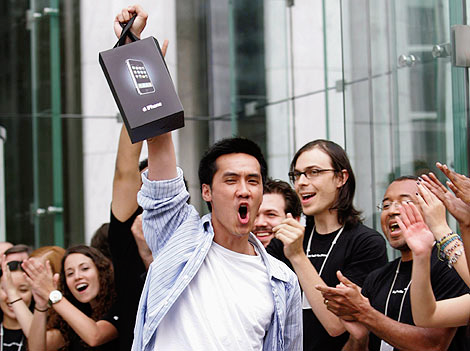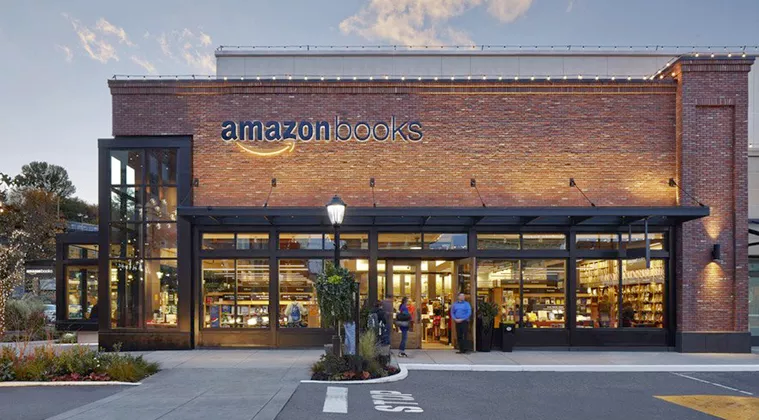There’s been a lot in the press lately about how e-commerce is beating bricks-and-mortar retail and that’s why companies like Walmart, Sears and Sports Authority are each closing over 100 stores this year. Business Insider even ran an article titled “Sears Chairman Says Every Retailer is Screwed.” (Fortunately, that’s not a direct quote!)
Also: Click & collect: brick-and-mortar stays current | Experiential shopping: more than just a store
If bricks-and-mortar is dying, someone should probably tell Amazon, as the largest internet seller in the US recently started opening physical stores; someone should tell Under Armour, who plan to more than double their number of stores by adding 200 more in 2016 alone.
Plus: Keeping score on connectivity in commercial real estate | Did you feel that? There’s a shake-up in the Bay Area.
In fact, there’s been a trend gaining momentum over the past few years where brands that have traditionally sold their goods online or through resellers have been opening physical stores. As I’ve said before, paraphrasing Mark Twain, the rumored “demise of brick-and-mortar stores has been greatly exaggerated.” The truth is not that retail is dying, it’s that retail is changing, and many brands that were previously online-only are moving to Main Street.
Silicon Valley Moves to Main Street
Apple was the first major player to make the leap into opening their own physical stores, way back in 2001. It’s hard to remember now, but a lot of people thought they were crazy to create a retail infrastructure instead of selling through stores like Best Buy. Apple’s stores succeeded because they understood “experiential shopping” long before it became a buzzword. Their stores were the antithesis of the computer stores of the time—whereas most stores selling computers then were dark warehouses, filled with shelves of black and beige computers and signage boasting sales prices and technical specifications, Apple’s stores were bright, open and uncluttered. It took years before others successfully followed their lead.
 (Photo: Reuters)
(Photo: Reuters)
Fast forward to 2016 where Samsung just announced that they were opening “a first-of-its kind cultural destination, digital playground, and Marketing Center of Excellence.” In doing so, they pushed Apple’s showroom concept even further, creating a store that doesn’t even sell Samsung products! It does however provide demos, classes and a dedicated space for customers to “experience Samsung technology and signature services in a smart home environment.” This sounds to me like the tech equivalent of a ‘lifestyle brand’ strategy.
Meanwhile, Amazon opened their first store in Seattle at the end of last year, a second store is opening soon in San Diego and they have plans for more on the way. A lot of people were shocked by this news, but if you think about it, it makes a lot of sense. First, Amazon has over 20 years of data on book-buying and could curate their inventory by regional trends that traditional booksellers might not notice. They could even make personalized recommendations for impulse purchases—imagine you get to the counter with your books and the cashier suggests the perfect complement to those books or mentions that they have in stock one of the books in your “basket” or wish list on amazon.com. They could also use these stores as locations to “click-and-collect” their online purchases or even return items purchased online. And Amazon will be able to get an even more comprehensive understanding of their customers by combining online data with instore behavior to further increase conversion rates and purchases across all customer touchpoints. Already it seems Amazon has done a very good job of taking the best aspects of online shopping to create the experience of shopping at their store.
 (Image courtesy of Amazon)
(Image courtesy of Amazon)
Most people have focused on Amazon’s new stores as being bookstores (they, are after all, called Amazon Books!) and indeed, for the reasons I’ve just mentioned, they have the potential to provide a truly unique and personalized book-buying experience. But the Seattle store also prominently displays Amazon’s own entries into personal technology—the Kindle e-reader, Fire tablets, Fire TV and its new Echo voice-controlled home technology hub. Perhaps part of Amazon Book’s motivation is to follow Apple’s lead, getting customers to become more excited and comfortable with their (bigger ticket) technologies first-hand.
Everybody Moves to Main Street
It’s not just personal technology companies that are making the move to Main Street. Many online sellers of apparel, accessories and personal care/cosmetics are also establishing physical stores.
Andy Dunn, founder and CEO of Bonobos men’s clothing store, gave a speech in 2010 called “The End of Apparel as We Know It,” in which he stated his belief that physical stores were unnecessary. Only a year later Bonobos opened a physical store and today they have 20. Similar to Samsung’s new “digital playground,” you can’t actually leave the store with Bonobos’ products; in the case of Bonobos, their “guideshops” are showrooms with highly personalized attention where you can try on their products and order them to be shipped to you for free.
Designer eyewear seller Warby Parker started out as the Zappos of prescription eyeglasses, overnighting up to five frames at a time for customers to try on at home and return free of charge. Once they found frames they loved, customers placed their order and the frames were fit with prescription lenses. Then, starting in 2013, they began to open retail locations and today they have 27. For Warby Parker, these locations allowed customers to try on dozens of frames instead of just five, but more importantly, the locations create brand awareness, encourage casual browsing and—due to small touches throughout the stores—position the eyewear company as a lifestyle brand.
Even Etsy, the online merchandiser that originally advertised itself as a peer-to-peer site for handcrafted goods, has gotten into the offline game. In 2014 they launched Etsy Wholesale, where brick-and-mortar retailers can make bulk purchases from “wholesale-ready independent designers” selling unique, hard-to-find products. And just last month Etsy opened its first physical location, a store-within-a-store concept at Macy’s in New York.
 (Photo: Forbes magazine)
(Photo: Forbes magazine)
A Future Model for Retail Entrepreneurs?
It may be that this trend represents the future of growing a retail brand—perhaps future entrepreneurs will plan to start a company online with the intention of building their product line and customer base before expanding to retail locations that allow them to develop the brand beyond the products they sell. If so, this is great news for those of us in retail real estate. It will ensure a steady stream of vibrant new businesses that have an established customer base and a tested leadership team.
So the next time you hear that retail is dying, remember Amazon, Apple, Samsung, Bonobos, Warby Parker and the others moving to Main Street. We may be seeing the decline of retail as we know it, but that might just be because we’re witnessing the rise of retail as it should be.
Anjee continues to be an insatiable collector of all things retail. She’s a student of culture living next door to future shoppers, whose fleeting trends constantly change the retail landscape … driving retailers, landlords and developers crazy!

 Anjee Solanki
Anjee Solanki

 Nicole Larson
Nicole Larson
